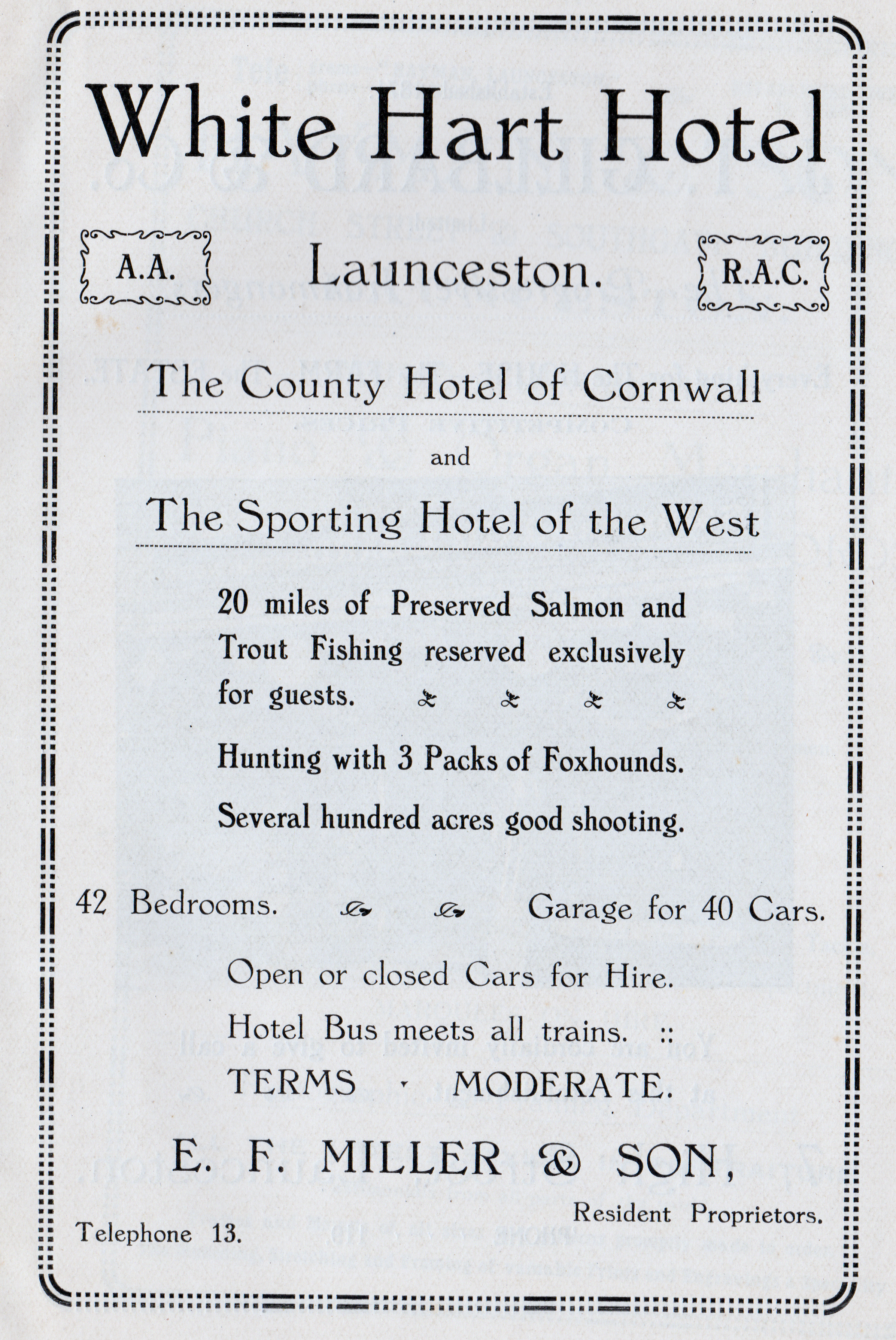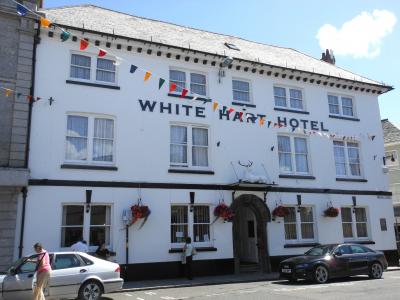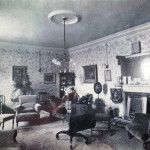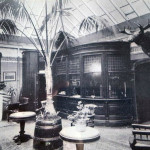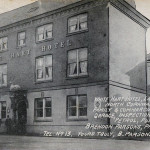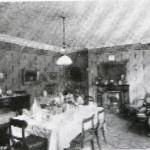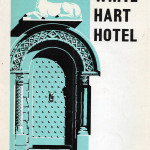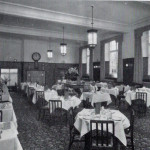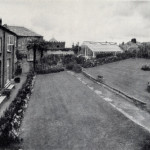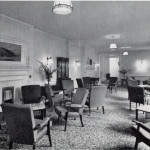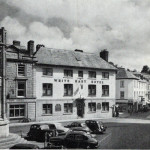.
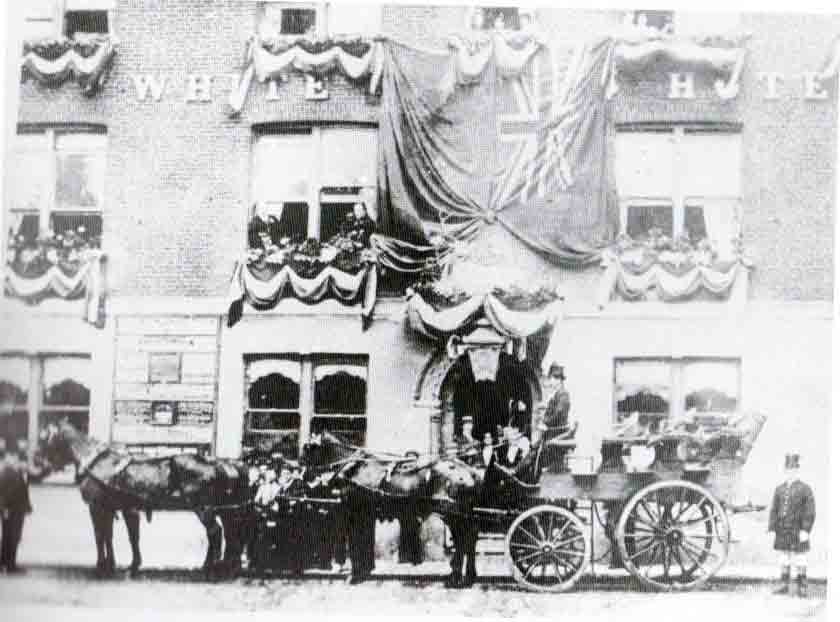
The White Hart Hotel in Launceston derives its sign from the favourite ‘badge’ used by Richard II (in the latter part of the 14C.) It suggests the possibility that a hostelry was founded there all those long years ago. It may date from the time of Edward the Fourth, who used a similar badge, or it may have been adopted later when the sign was of established use.
“A White Hart lodged,” i.e., lying down, appears along the string course under the windows of Westminster Hall, alternating with the helmet and crest of the King -(Richard the Second). It is repeated no less than eighty-three times, and such was the fertility of design of the sculptor, that no two examples are exactly alike.
The White Hart: – origin:- The following account by Sir Halliday Wagstaffe, Keeper of the Woods & Forests in the reign of King Henry VII. The King fancied a day’s hunting and repaired to the New Forest for that purpose. A celebrated white hart, called Albert, a noble-looking animal, was selected for the day’s sport. Albert showed them some fine running, and the chase continued till nearly close of day, when, after being hard pressed by the dogs, he crossed a river near Ringwood, and finally stood at bay in a meadow; his pursuers came up at just that time the dogs were about to make a sacrifice of their victim, when the ladies interceded for the noble animal. Their intercession was listened to and the dogs called off, and the animal secured. He was taken into Ringwood, and a gold collar was placed around his neck, and he was removed to Windsor; that day Halliday Wagstaffe was knighted in Ringwood.
The house of entertainment at which the King and his courtiers partook of some refreshment had its sign altered to that of the White Hart, and has retained its name to this day.
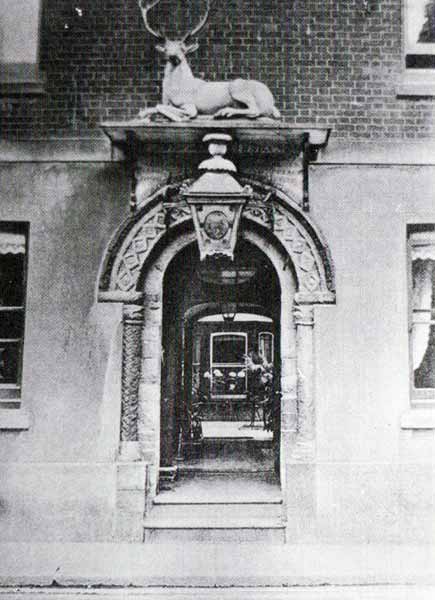 C. Henderson: ‘Essays in Cornish History’. THE WHITE HART at Launceston was built in the early Eighteenth Century and is described by the celebrated Dr. Stukeley in a letter to Dr. Borlase. It has a magnificent Norman Doorway (left), which evidently came from the chapel in the castle. (It is widely believed that the doorway actually comes from the Augustine priory at Newport but Henderson’s assumption is probably closer to the truth considering the length of time that had passed from the Priory’s closure).
C. Henderson: ‘Essays in Cornish History’. THE WHITE HART at Launceston was built in the early Eighteenth Century and is described by the celebrated Dr. Stukeley in a letter to Dr. Borlase. It has a magnificent Norman Doorway (left), which evidently came from the chapel in the castle. (It is widely believed that the doorway actually comes from the Augustine priory at Newport but Henderson’s assumption is probably closer to the truth considering the length of time that had passed from the Priory’s closure).
In March 1767 the front of the house was rebuilt of Launceston red brick and the interior refurbished. Perhaps this is when the doorway was fitted. The new longroom was described as the largest in the county. In 1774 Mr Thomas Prockter of ‘The Swan’, Exeter, moved in. In January 1776 he declared “it is greatly improved” and described it as ‘having three dining rooms and three parlours, being able to make up sixty beds and stable sixty horses and with three neat post-chaises with twelve able horses.’ Widow of Thomas (above) Mrs Procter became landlady.
In 1775 Mr John Pearse, innkeeper, the White Hart Hotel, Launceston purchased part of the Common Lands of Scarne of the Corporation for £25 per annum for 500 years, the vendors reserving for themselves the right to the timber then on the estate. This money was meant for the Aftermath Fund.
In 1849, the door cill of the White Hart Hotel, Broad Street, was used as the town bench mark for measuring the proposed new water scheme. The reservoir water level was 39 feet and 2 inches above the door cill; the base of St Mary Magdalene Church is 46 feet below this level. The North Gate was 137 feet 5 inches below and the bed of the River Kensey at the bridge was 246 feet and 11 inches below. The site of the reservoir at Dunheved Green was 500 yards from the West Gate.
Later in the year of 1849 a travelling salesman, selling street furniture for his uncle’s foundry in Worcester, came to Launceston and put up for the night at the White Hart. Feeling unwell the 39 years old salesman, Mr John Hardy, went to bed early in the evening. When the chambermaid entered his room next morning he was found to be dead. The cause of death was diagnosed as cholera and the poor man was very quickly buried in the ‘Bowling Green’ cemetery on Dockacre Road, the grave being fenced off by wrought iron railings. (see plaque on west wall of St Mary’s church).
In 1875 Mr John T Pearse, landlord of the White Hart Hotel advertised the price for a ‘hearse pulled by a pair of horses at 2d per mile long distance, apply to him for a price for short distances.’
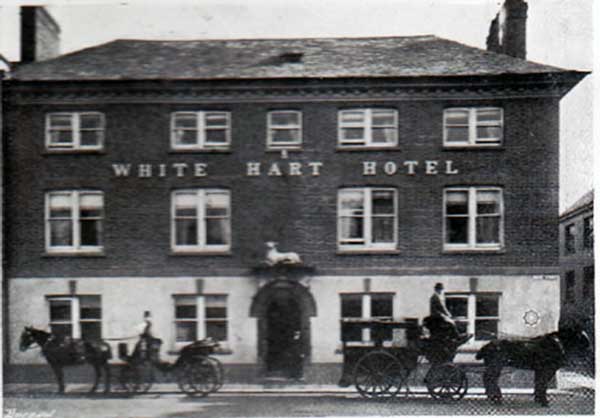
1901: The White Hart Hotel, Launceston. B Parsons begs to inform the public generally that he sells Wines & Spirits for price and quality equal to any on the market; does Posting at moderate charge; and is agent for Sparrow’s White Lime, delivered at any station between Camelford and Ashwater.
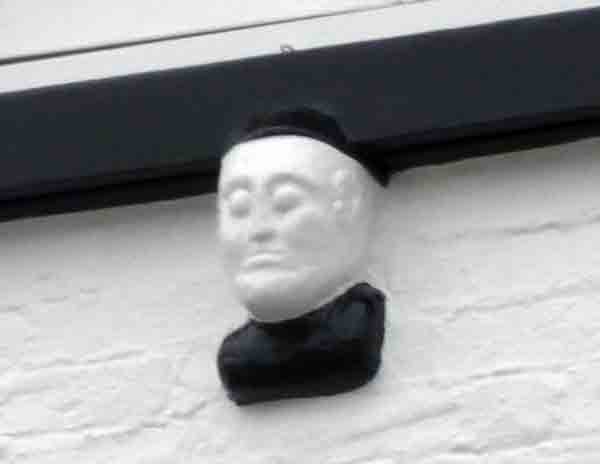
“A new bridge was erected at Polson in 1835, during the erection of which a curious coach mishap took place. The London mail coach, due in Launceston at a quarter past eleven at night drew up one evening, as usual, at the Arundel Arms, Lifton, and the driver, passengers and guard dismounted, Mr Wilson, agent of the Duke of Northumberland being the only person left in the vehicle.
The horses, which included a blind near-leader, suddenly bolted and galloped towards Launceston, and having crossed without accident the temporary wooden bridge at the foot of the hill, halted driverless and breathless at the White Hart Hotel, Launceston, their accustomed stopping place.
They were followed by the guard, Cornelius Crowhurst, who had thrown himself on horseback immediately he had discovered their flight and was delighted to find that all was well.”
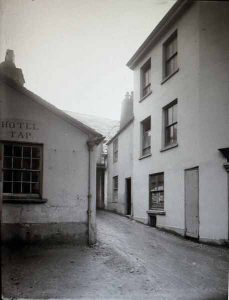
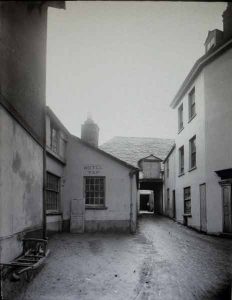
The old-established hotel was owned and run by the Miller family for a better part of 40 years, but in December 1955 it was purchased by Trust House Ltd.. They installed a new manager, Peter Dockar , but who left after irregularities were found in the books in January 1957. It was soon found that Dockar had previous convictions for housebreaking and larceny and in 1946 had been sentenced to three years imprisonment for burglary, armed robbery, larceny in a dwelling house and demanding by menaces with intent to steal. At the Cornwall Assizes at Bodmin in June, 1957, he pleaded ‘guilty’ to six charges of forgery, four of falsification of accounts, one of fraudulent conversion, and one of embezzlement, involving a total of £324. He was sentenced to three years imprisonment.
The Trust House continued to run the hotel until 1969 when it was acquired by a group of local people, who after running it themselves for a short while then sold it with the new proprietors being Dr. W. P. Costello and Mr. M. N. Montgomery.
In 1980, an exhilarated Rugby team damaged the symbol of the White Hart above the doorway to the Hotel. Two ladies decided they could repair the poor animal and were given permission to take it down and remove it. It appears one of the ladies later expired and the hart disappeared from view until an auctioneer was called upon to examine a property near St Breward. The auctioneer, Mr John Wakeham, recognised the wounded animal and it was returned to Launceston for examination. Pronounced too ill to be returned to its station, the animal was packed off to Egloskerry where wood carver and all-round specialist Mr John Fenn, offered to give it a new neck and head. The offer was taken up and the stag, in bright new finery, was helped into its rightful position above the portal of the establishment to which it gave its name, at 12 noon, on Monday the 8th of September, 2003, to once more regard the activities in Launceston Square.
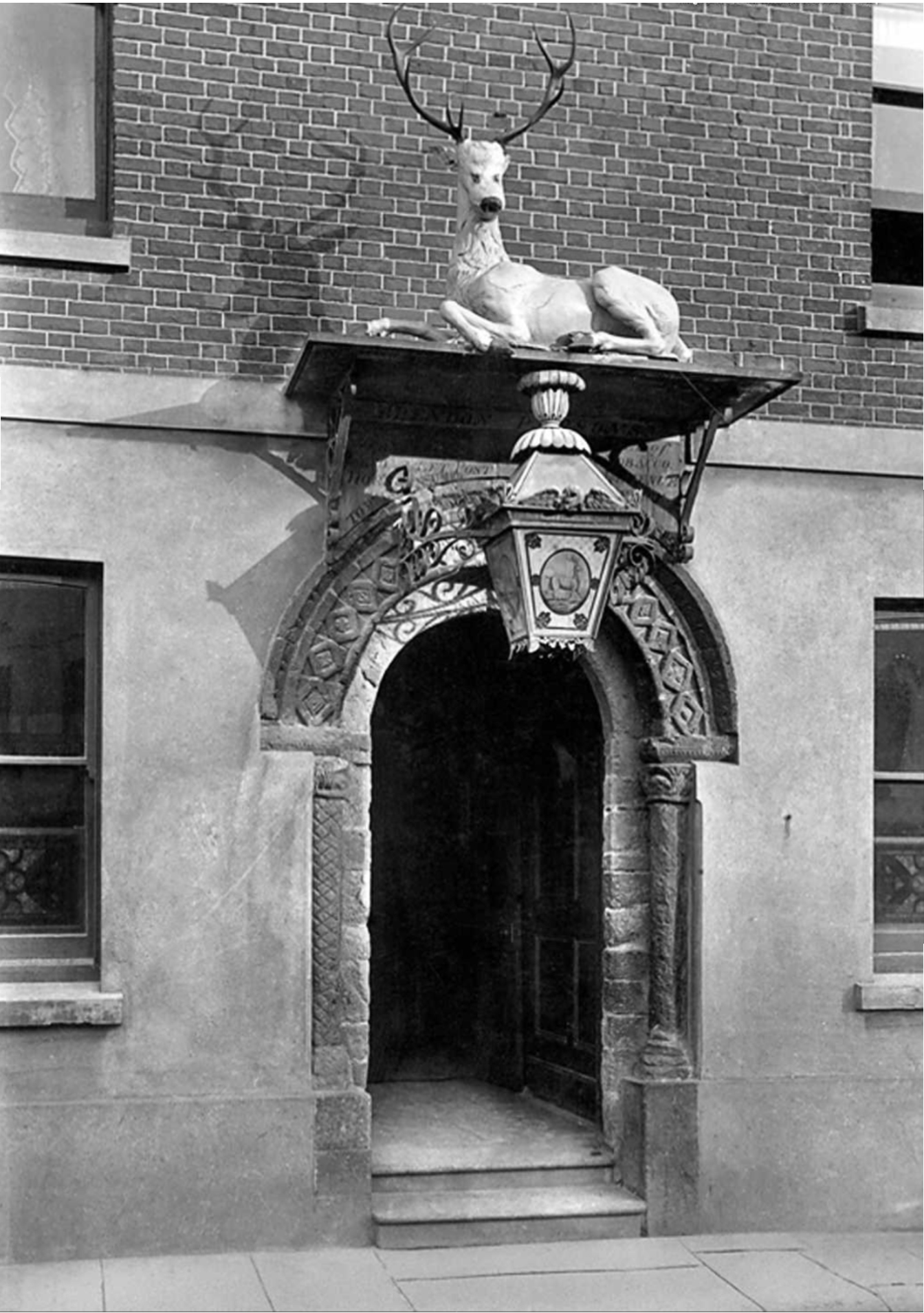
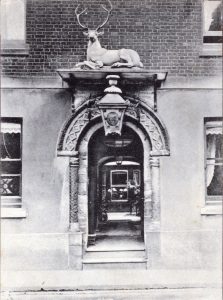
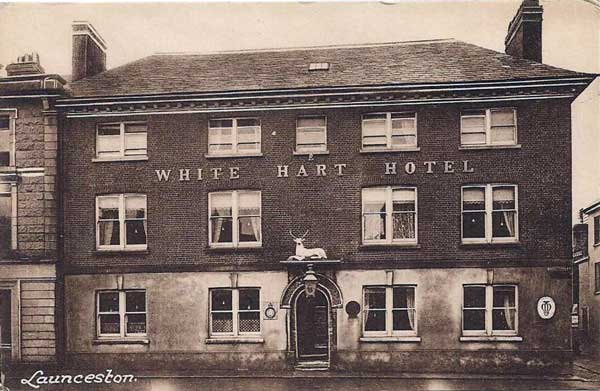
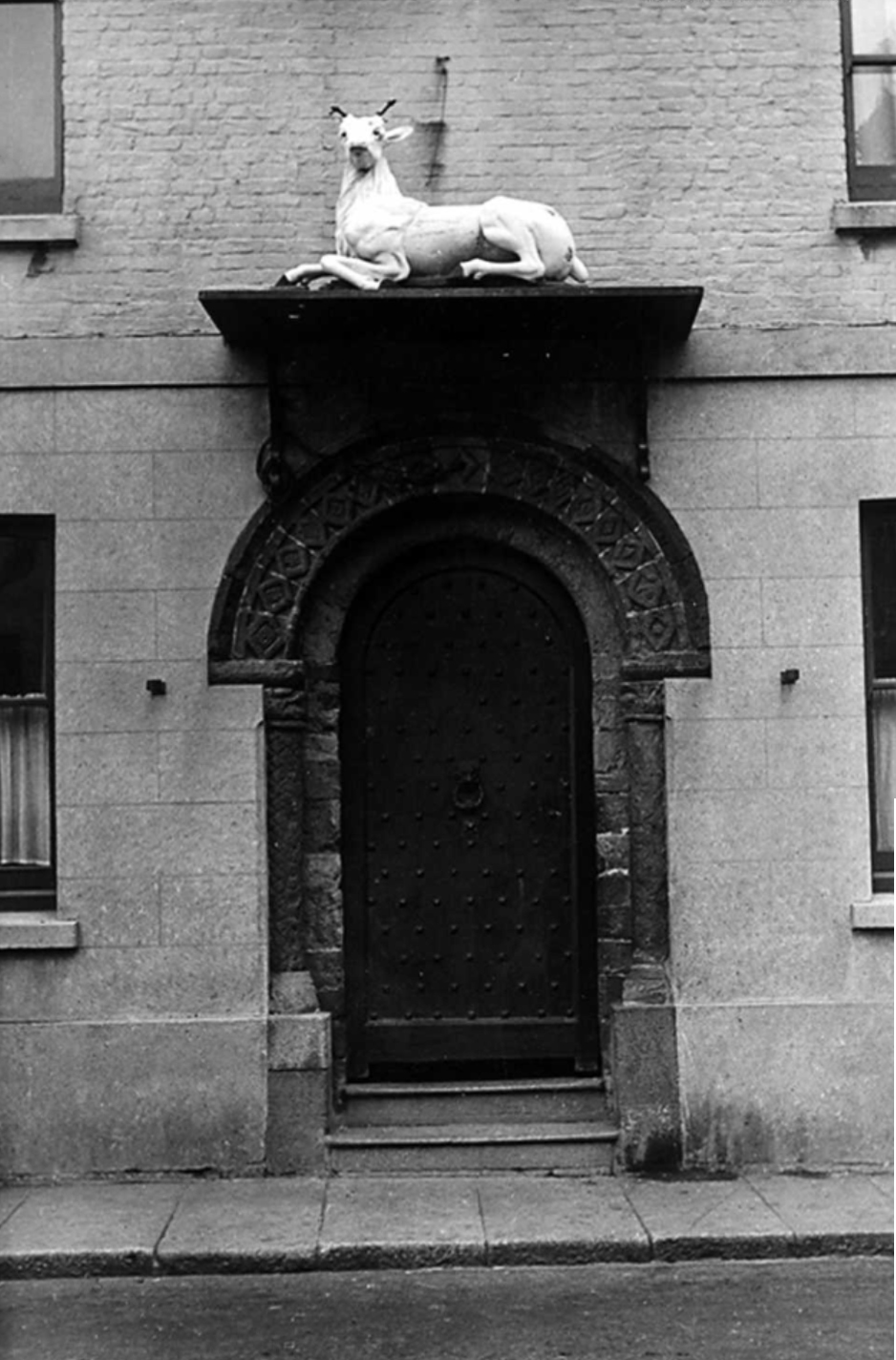
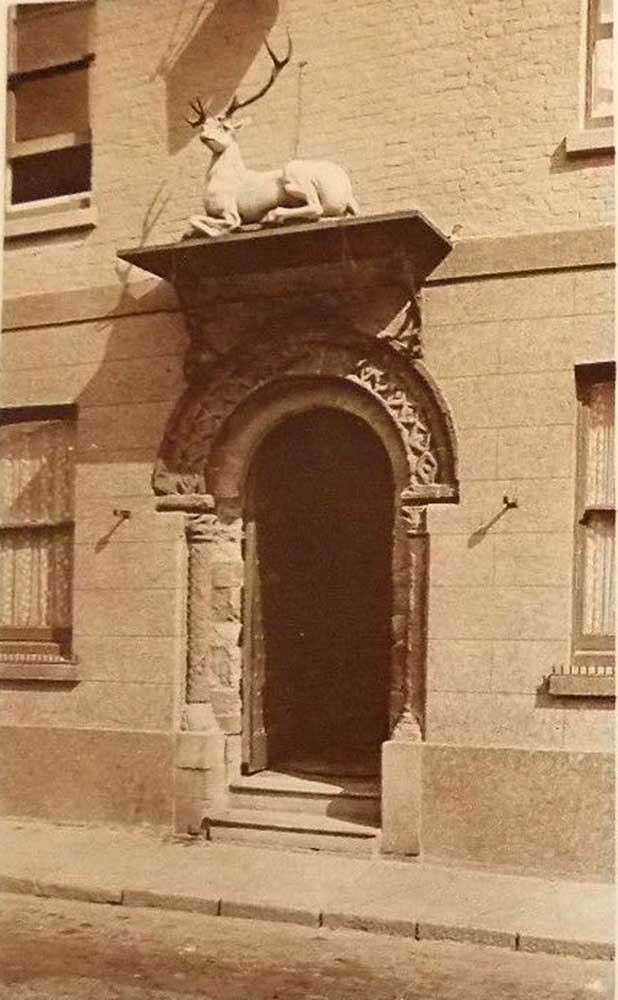
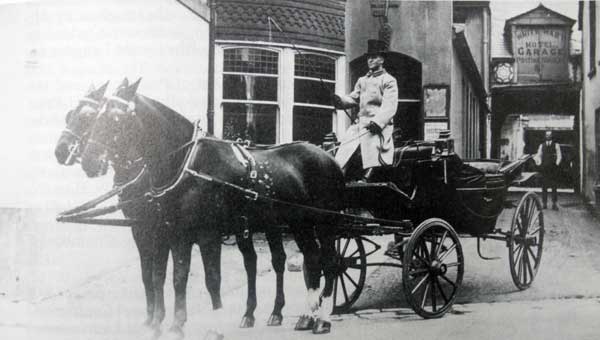
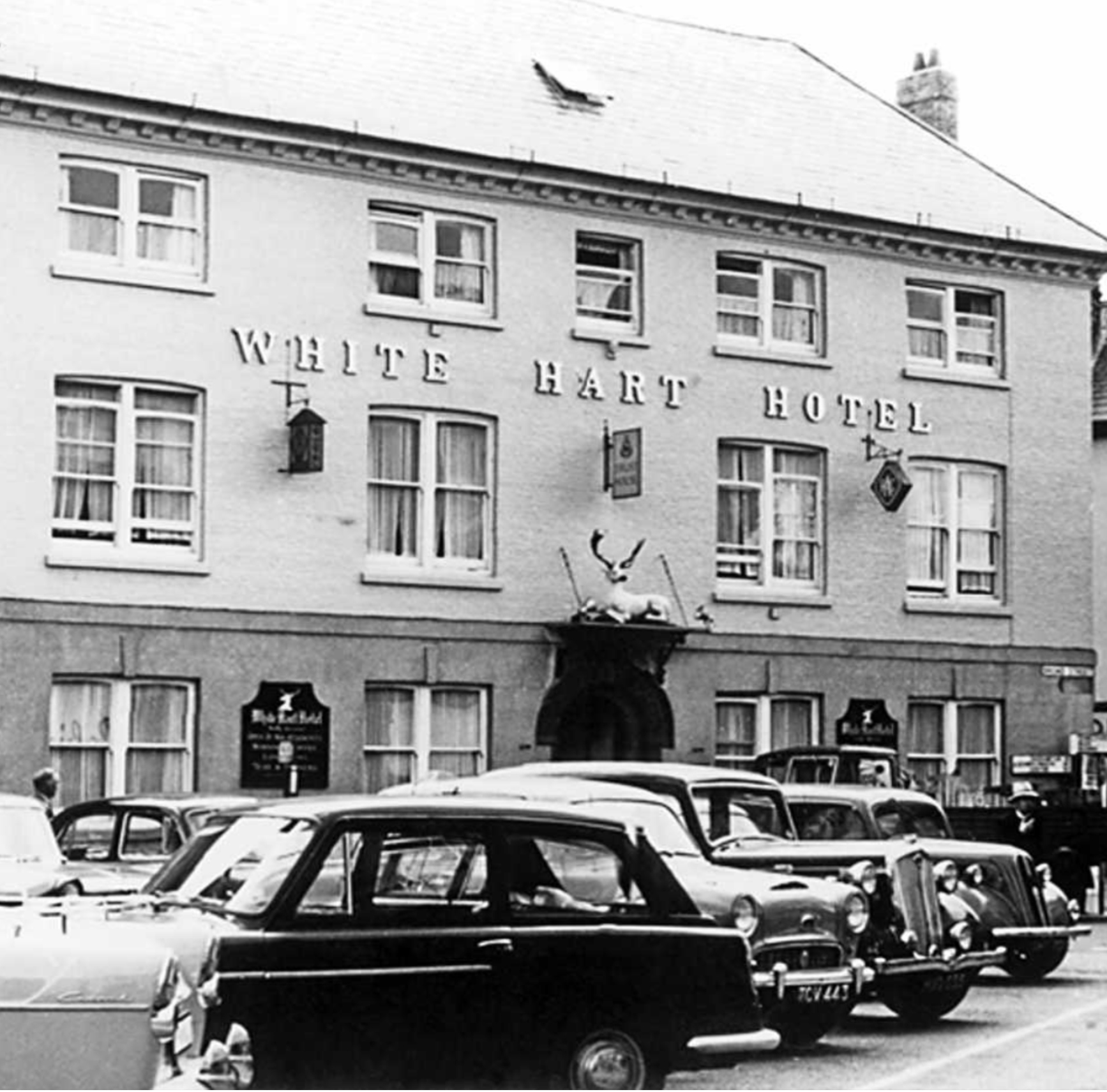
Visits: 847

